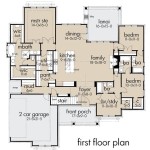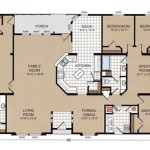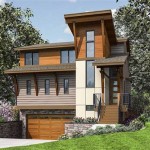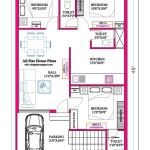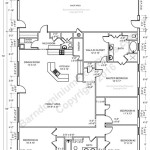Affordable To Build Home Plans: Maximizing Value and Minimizing Costs
The dream of homeownership remains a significant aspiration for many individuals and families. However, the escalating costs of construction materials, labor, and land can make this dream seem increasingly unattainable. Exploring affordable to build home plans offers a practical pathway to achieving homeownership without incurring overwhelming financial burdens. This article will delve into the key considerations, strategies, and resources available for those seeking cost-effective home construction solutions.
Affordable home plans are not synonymous with low-quality or aesthetically unpleasing designs. Instead, they represent a strategic approach to building that prioritizes efficiency, simplicity, and the intelligent use of available resources. The key lies in selecting plans that minimize material waste, optimize space utilization, and reduce complex architectural features that contribute to higher construction costs. Furthermore, understanding the nuances of local building codes, permit requirements, and potential financing options is crucial for successful and affordable home construction.
Key Point 1: Design Considerations for Affordable Home Plans
The design phase is arguably the most critical element in determining the overall cost of a home. Decisions made during this stage have a direct impact on material consumption, labor requirements, and the complexity of the building process. Therefore, opting for a design that emphasizes simplicity and efficiency is paramount for achieving affordability.
One-story ranch-style homes are often cited as examples of cost-effective designs. Their simple rectangular footprints and lack of complex rooflines minimize material usage and simplify the construction process. Similarly, square or rectangular floor plans generally require less framing material and are easier to build than homes with irregular shapes.
Minimizing complex architectural features is another key consideration. Extensive gables, dormers, and intricate rooflines can significantly increase material and labor costs. Choosing a simpler roof design, such as a gable or hip roof with minimal embellishments, can result in substantial savings. Furthermore, limiting the number of corners and angles in the floor plan can reduce the amount of framing and finishing work required.
Interior design also plays a crucial role in affordability. Open floor plans are generally more cost-effective than homes with numerous small, enclosed rooms. Open spaces require fewer walls, doors, and trim, resulting in lower material and labor costs. Maximizing natural light through strategically placed windows and skylights can also reduce the need for artificial lighting and lower energy bills.
Careful consideration should be given to the size of the home. While it may be tempting to build a large home, the square footage directly impacts the overall cost. Opting for a smaller, more efficient design can dramatically reduce construction expenses. Prioritizing essential living spaces and minimizing non-essential areas, such as formal dining rooms or large, unused guest rooms, can result in significant savings.
Finally, selecting readily available and cost-effective building materials is crucial. Standard-sized lumber, readily available windows and doors, and common roofing materials are generally less expensive than custom-made or specialty items. Consulting with a builder or architect to identify the most cost-effective material options for the local area is highly recommended.
Key Point 2: Strategies for Reducing Construction Costs
Beyond the design phase, several strategies can be employed to further reduce construction costs. These strategies involve careful planning, efficient resource management, and a willingness to explore alternative construction methods.
One effective strategy is to act as the general contractor. This involves overseeing the entire construction process, hiring subcontractors, and managing the budget. While this approach requires significant time and effort, it can result in substantial savings by eliminating the general contractor's overhead and profit margin. However, only individuals with significant construction experience and project management skills should consider this option.
Alternatively, partnering with a reputable and experienced builder who is committed to cost-effective construction is essential. Obtaining multiple bids from different builders and thoroughly vetting their qualifications and references is crucial. Selecting a builder who is willing to work collaboratively to identify cost-saving opportunities can make a significant difference in the overall project budget.
Value engineering is another important strategy for reducing construction costs. This involves systematically analyzing each aspect of the design and construction process to identify opportunities for cost reduction without compromising quality or functionality. For example, alternative framing methods, such as advanced framing techniques, can reduce lumber usage and improve energy efficiency. Similarly, substituting more affordable materials for expensive ones can significantly lower material costs.
Efficient resource management is also critical for minimizing waste and controlling costs. Careful planning and accurate material ordering can prevent overspending and reduce the amount of wasted materials. Implementing a strict waste management plan can also help to minimize disposal costs.
Exploring alternative construction methods can also lead to significant cost savings. Prefabricated homes, modular homes, and panelized homes offer a faster and more efficient construction process compared to traditional stick-built homes. These methods often involve building components off-site in a controlled environment, which can reduce labor costs and minimize weather-related delays.
Finally, consider phasing the construction project. Completing the core structure and essential living spaces first, then adding additional features or finishing touches later, can help to spread out the costs and make the project more manageable financially. This approach allows homeowners to prioritize essential needs and gradually improve their home over time.
Key Point 3: Resources for Finding Affordable Home Plans
Numerous resources are available to assist individuals in finding affordable home plans. These resources range from online plan marketplaces to local architects and builders specializing in cost-effective designs.
Online plan marketplaces offer a vast selection of pre-designed home plans at various price points. These marketplaces typically allow users to filter plans based on size, style, and budget. Reviewing customer feedback and testimonials can help to identify reputable plan providers and ensure the quality of the designs. Purchasing a pre-designed plan can be significantly less expensive than hiring an architect to create a custom design.
Local architects specializing in affordable housing can provide valuable expertise and guidance. Architects can help to tailor existing plans to meet specific needs and budgets or create custom designs that optimize cost-effectiveness. They can also assist with obtaining permits and navigating local building codes.
Builders specializing in affordable construction are also valuable resources. These builders typically have experience working with cost-effective materials and construction methods. They can provide accurate cost estimates and identify potential cost-saving opportunities. Selecting a builder with a proven track record of delivering affordable homes on time and within budget is crucial.
Government agencies and non-profit organizations often offer resources and programs to assist individuals in building affordable homes. These programs may include grants, loans, and technical assistance. Researching local and national programs can help to identify potential sources of funding and support.
Home improvement stores and building material suppliers also offer resources and assistance for homeowners. Many stores provide free workshops and seminars on various construction topics, including cost-effective building techniques. Building material suppliers can offer advice on selecting the most affordable and suitable materials for the project.
Finally, networking with other homeowners who have recently built affordable homes can provide valuable insights and advice. Sharing experiences and learning from others can help to avoid common pitfalls and make informed decisions throughout the construction process.

Affordable House Plans Our Est To Build Blog Homeplans Com

Est House Plans To Build Simple With Style Blog Eplans Com

Affordable House Plans Our Est To Build Blog Homeplans Com

Building On The Affordable House Plans Of 2024 Houseplans Blog Com
Est House Plans To Build Simple With Style Blog Eplans Com

Building On The Affordable House Plans Of 2024 Houseplans Blog Com

Affordable House Plans Our Est To Build Blog Homeplans Com

Building On The Affordable House Plans Of 2024 Houseplans Blog Com

Affordable House Plans Home Designs The Designers

Est House Plans To Build Simple With Style Blog Eplans Com


